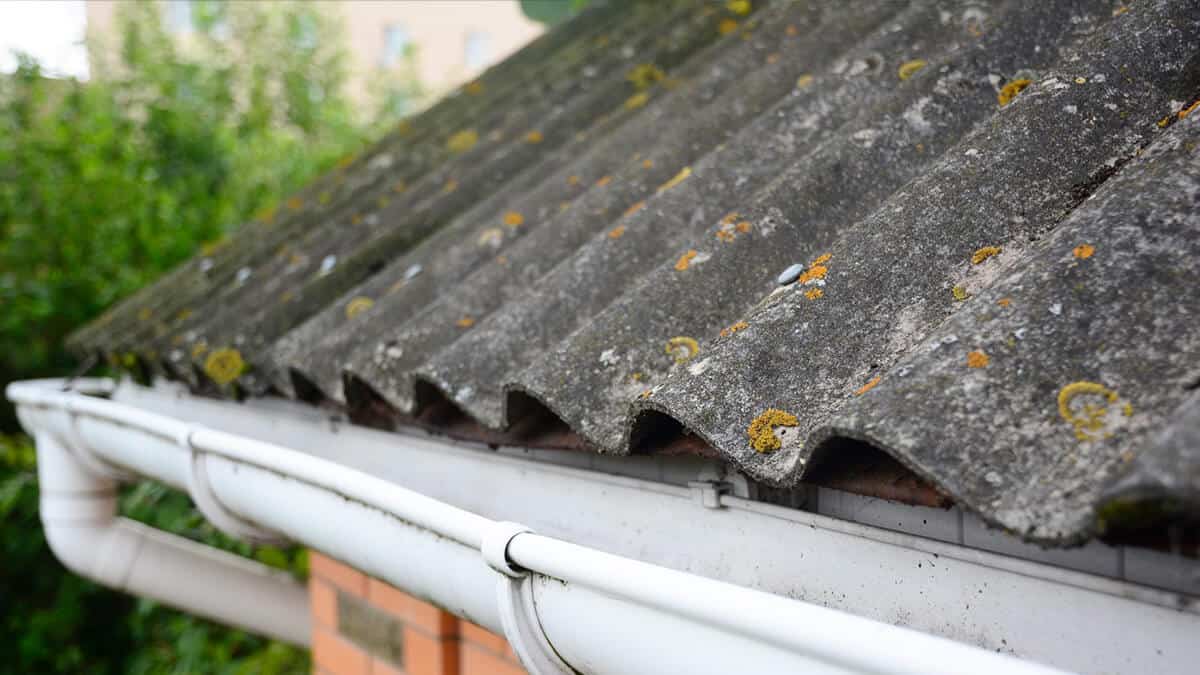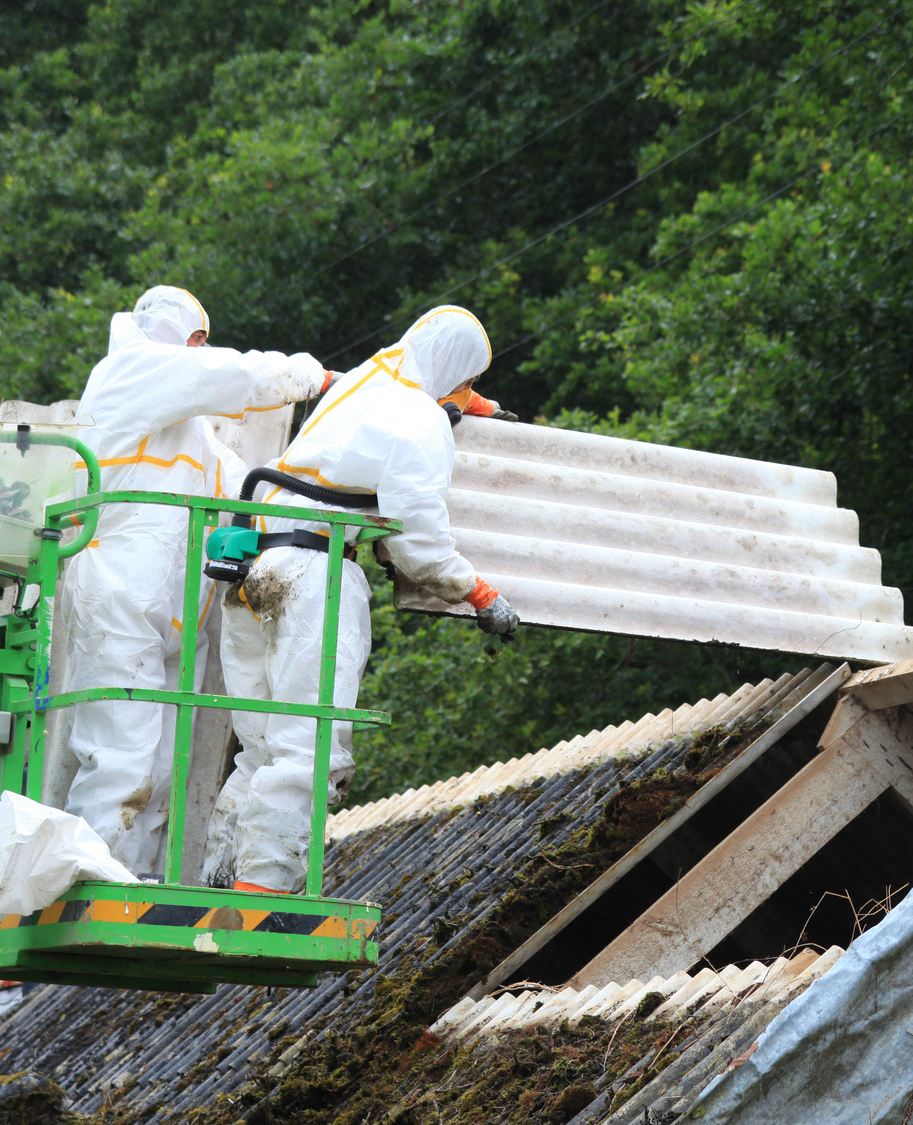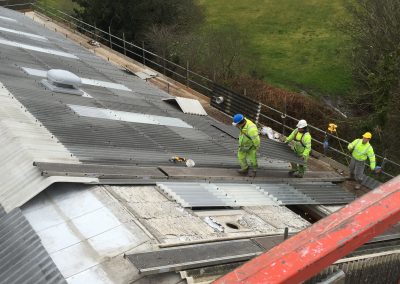Removal Of Asbestos Roofing Materials Commercial Roofing Contractor For Removal

Asbestos is a naturally occurring mineral that has been widely utilized in construction materials because of its fire-resistant properties and sturdiness. However, the health risks related to asbestos exposure have become more and more clear through the years, leading to stringent regulations and guidelines for its removal, generally known as asbestos abatement guidelines. These guidelines aim to attenuate the risk of exposure to asbestos fibers throughout removal and demolition activities.
Understanding the importance of proper asbestos abatement procedures is crucial for each workers and most people. When asbestos-containing materials are disturbed, microscopic fibers can turn into airborne, leading to inhalation and potential severe health issues corresponding to lung most cancers and mesothelioma. This heightened awareness has prompted the event of complete guidelines that should be adhered to by professionals concerned in asbestos abatement.
Prior to commencing any abatement project, it is important to conduct a thorough assessment of the positioning. This entails identifying the presence of asbestos-containing materials, assessing their condition, and evaluating the potential risks. A certified inspector, often educated and certified, usually performs this assessment. This preliminary step ensures that all needed precautions may be taken during the removal process.
Once the assessment is full, the next phase includes creating an in depth abatement plan. This plan ought to outline the methods to be used, safety measures to be carried out, and waste disposal procedures. It must embrace the specific work practices that shall be adopted to make sure the security of each workers and occupants nearby. Communication with all stakeholders is paramount at this stage to ensure everybody understands the procedures and safety measures in place.
Environmental Impact Of Asbestos Roof Removal Commercial Roofing Contractor For Removal
Personal protective equipment (PPE) is a crucial element of asbestos abatement guidelines. Workers involved in the removal process should put on applicable gear, together with respirators, disposable coveralls, gloves, and goggles. This PPE serves as a barrier between the worker and potentially hazardous materials, decreasing the chance of inhalation or skin contact with asbestos fibers.
Containment is one other essential component of safe asbestos abatement. The work area must be clearly delineated to forestall unauthorized access. This usually involves using plastic sheeting to seal off the realm and prevent asbestos fibers from escaping. Negative air pressure units may be utilized to guarantee that any airborne fibers are contained within the designated work web site.
Wet methods are really helpful for asbestos removal when feasible. By dampening materials, the release of asbestos fibers into the air is significantly lowered. This practice factors to the importance of guaranteeing that the environment stays moist in the course of the removal process. In addition, eradicating asbestos as complete sections or items, as an alternative of breaking them apart, further minimizes the danger of releasing fibers.
After the removal process is complete, thorough cleaning of the work space is crucial. This entails the use of specialized vacuums geared up with HEPA filters to guarantee that any residual asbestos fibers are effectively captured. Additionally, all surfaces must be totally wiped down, and air checks are sometimes performed to confirm that no asbestos fibers remain within the environment.
Removal Of Asbestos Roofing Materials Hazardous Materials & Disposal Services
Proper disposal procedures for asbestos waste are outlined within the guidelines to forestall exposure to asbestos in landfills or other disposal sites. Asbestos-containing materials have to be double-bagged in leak-tight containers and transported in accordance with native regulations. Only designated disposal sites that are geared up to deal with hazardous waste ought to obtain asbestos materials.

Training and certification are also basic parts of the guidelines. All personnel involved in asbestos abatement should endure a rigorous training program centered on safe work practices, hazard recognition, and emergency response methods. This training ensures that employees are competent in managing the inherent risks related to asbestos and may intervene successfully in case of an emergency.
Compliance with native, state, and federal regulations isn't just a best practice but a legal requirement. Agencies such as the Environmental Protection Agency (EPA) and the Occupational Safety and Health Administration (OSHA) have established regulations governing asbestos abatement. These regulations present a framework for making certain that asbestos is managed safely and responsibly, protecting both staff and the public.
In conclusion, adhering to asbestos abatement guidelines is important for guaranteeing the safety of everyone involved in or affected by an abatement project. From the initial assessment and planning stages to the precise removal and proper disposal of asbestos-containing materials, every step have to be approached meticulously - Asbestos Roof Removal For Home Renovations. Education and training are essential to cultivating a educated workforce capable of implementing these guidelines successfully. As awareness of asbestos-related health risks continues to develop, compliance with these guidelines will contribute significantly to public health and safety. By following established protocols, we are ready to mitigate risks related to asbestos exposure, safeguarding not simply staff, but the community as an entire
Professional Asbestos Roof Removal Solutions Cost Guide For Asbestos Removal
- Ensure proper identification and assessment of asbestos-containing materials (ACM) previous to starting any abatement work to determine the extent and type of materials present.
- Utilize educated and licensed professionals for the removal process to minimize health risks and ensure compliance with regulatory standards.
- Establish a containment area across the worksite utilizing plastic sheeting and limitations to forestall the unfold of asbestos fibers during abatement actions.
- Implement unfavorable air pressure methods to filter airborne particles and maintain air quality throughout the containment area throughout the removal process.
- Conduct thorough inspections and air monitoring earlier than, throughout, and after abatement to substantiate that asbestos ranges are inside safe limits.
- Use appropriate private protective equipment (PPE) for employees, including respirators, disposable coveralls, and gloves, to protect towards exposure.
- Follow proper waste disposal protocols for ACM, guaranteeing it's securely sealed and transported to designated hazardous waste facilities.
- Maintain detailed data of the abatement process, including inspection stories, monitoring results, and disposal certifications, for regulatory compliance.
- Provide clear communication with occupants and relevant stakeholders concerning the abatement process, potential risks, and safety measures being carried out.
- Stay up to date with native, state, and federal regulations regarding asbestos management and abatement to ensure compliance and safety all through the project.undefinedWhat are the primary asbestos abatement guidelines I ought to be aware of?
The main guidelines embrace following federal and state regulations, conducting an assessment to identify asbestos presence, having a educated and licensed contractor perform the abatement, and ensuring proper cleanup and disposal of asbestos waste based on native environmental laws.

How can I tell if my home incorporates asbestos?
Asbestos could additionally be found in materials such as insulation, flooring tiles, and roofing. If your home was built before the 1980s, it’s advisable to have a professional inspection, as testing involves taking samples from suspected materials and sending them to a lab for analysis.
Risk Communication Regarding Asbestos Removal Commercial Roofing Contractor For Removal
What steps should I take if I find asbestos in my home?
If asbestos is found, it is essential to not disturb it. You should contact a licensed asbestos abatement contractor to assess the state of affairs. They will consider whether or not to comprise, take away, or monitor the asbestos, relying on its situation and placement.
Are householders allowed to carry out their very own asbestos abatement?
Generally, it is not recommended for owners to handle asbestos abatement on their own due to health risks and legal implications. Abatement should be carried out by certified professionals who are skilled in safe handling and disposal methods to guard themselves and residents.
Impact Of Weather On Asbestos Roof Removal Residential Asbestos Removal Services
What is the importance of air monitoring throughout asbestos abatement?
Air monitoring is crucial to ensure that asbestos fibers usually are not launched into the environment through the abatement process. It entails sampling air earlier than, during, and after the work to substantiate that asbestos ranges are below acceptable limits, thus protecting workers and occupants.
How do I choose a professional asbestos abatement contractor?
Environmental Impact Of Asbestos Roof Removal How To Get Your Roof Replaced For Under 1000
Look for contractors who are licensed, certified, and have experience in asbestos removal. Check their references, read critiques, and confirm their credentials. It’s important that they follow native regulations and OSHA guidelines for excellent safety practices.
What should I anticipate during the asbestos abatement process?
During the process, the work area will be sealed off, and containment measures shall be carried out. The contractor will use specialized equipment to securely remove the asbestos material, adopted by thorough cleansing and disposal of all waste to ensure the area is safe for re-occupancy.
Asbestos Roof Encapsulation Alternatives Removal & Replacement Of Roof Asbestos
What are the risks of not following asbestos abatement guidelines? Commercial Asbestos Roof Removal Services.
Failing to stick to guidelines can expose residents and employees to harmful asbestos fibers, resulting in critical health issues such as mesothelioma and lung cancer. Legal penalties may come up, together with fines and potential litigation from violations of safety regulations.
Successful Asbestos Roof Removal Stories Removal And Disposal Of Asbestos
How typically should I have my property inspected for asbestos?
For older homes or properties which will undergo renovations, regular inspections every few years are advisable. Additionally, if any renovations or disturbances happen, an inspection ought to be performed to make sure no hidden asbestos is present that could pose health risks.
go to website great post to read